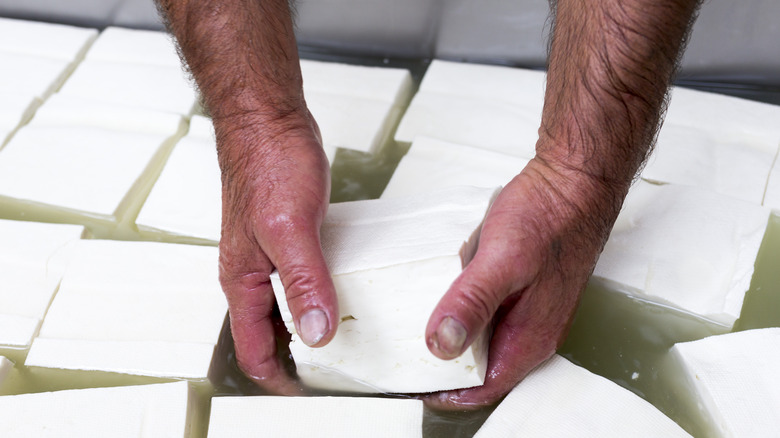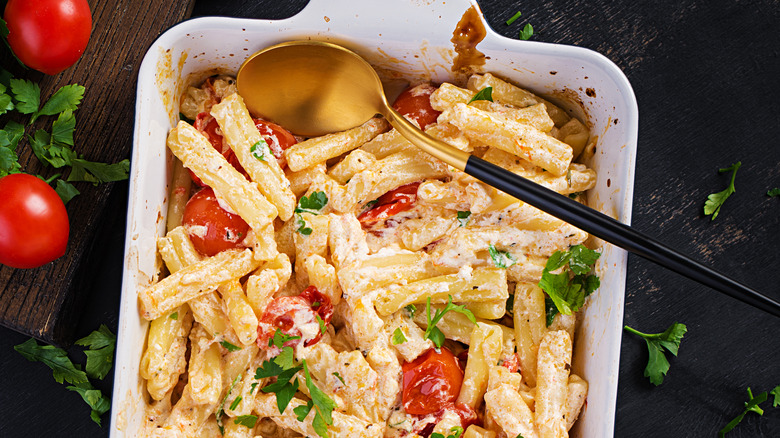Why You Should Stop Throwing Out Leftover Feta Brine
A look at the top 10 favorite cheeses in the world and you'll see that the usual suspects occupy the upper tiers. You have cheddar, Parmigiano Reggiano, Brie, and Roquefort in the top four, according to Local Meat Milk Eggs. Feta, that wonderfully salty sheep's milk cheese, sits in the middle of the list at No. 6, one spot above mozzarella. The beautiful thing about feta is that it has far more uses and purposes than serving simply as a popular cheese.
Not all feta cheese is created equal, however. As Bon Appétit recommends, you should always be buying feta that's soaking in brine as opposed to pre-crumbled or vacuum sealed. This brine ensures that the feta block will be moist, tangy, and have a longer shelf life than pre-crumbled or vacuum sealed, which can be dry and chalky. These salty little blocks of cheese can be used as additions to salads, whipped into a dip, or enjoyed on their own with a refreshing glass of white wine. So now that you've done something with your excellent feta, what do you do with the leftover brine? Throw it out? No! Please, don't do that. We'll explain.
The many uses of feta brine
It stands to reason: what's good for feta should be good for other ingredients, yes? Any apprehensions you have about using leftover brine should be wiped from your mind immediately. As Food & Wine explains, the brine leftover in your pickle and olive jars are akin to liquid gold. A basic brine can draw out and elevate the natural flavors of a dish. So while the brine you soak your Thanksgiving turkey in is different than feta brine, the basic principle is the same. You're using it to layer flavor. If you like feta cheese, there is no reason you shouldn't be cooking with the brine.
According to Food52, you can use feta brine in multiple different recipes. Not only will the brine work with any dish for with which feta would pair, but it will also add a saltiness and subtle creaminess to other ingredients, like chicken breasts, fruits for salads, roasted vegetables, and a variety of other ingredients. Food & Wine recommends adding it to hot sauce for a tangy, spicy chicken sandwich. Using it in salad dressings or even a martini can add the just right saltiness that will allow other flavors to sing as well. And the best part is, it might already be in your fridge.

